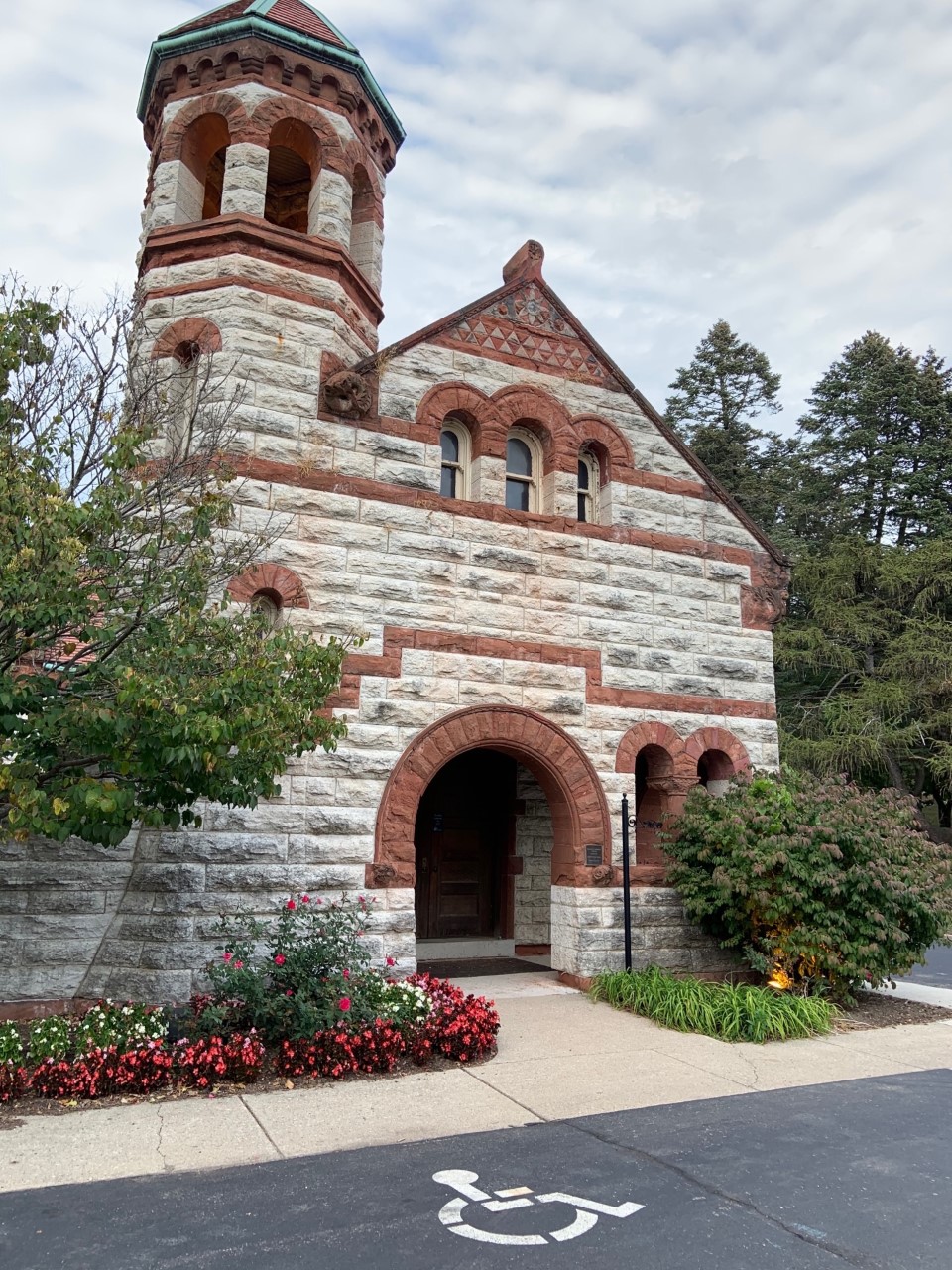
Woodland Cemetery | Photo by Natalie Cunningham | The Wright State Guardian
This week’s ‘Dayton’s Not Dead’ feature might be on the side of a little dead.
Woodland Cemetery was founded in 1841 but the first burial wasn’t until two years later in 1843.
John Van Cleve founded Woodland Cemetery after the original two cemeteries in Dayton were filled. Some of the gravestones in Woodland Cemetery show dates earlier than 1841 because those buried in the original two cemeteries were moved into Woodland Cemetery, according to Sean O’Regan, CEO of Woodland Cemetery.
A rural cemetery?
Woodland Cemetery was one of the first cemeteries to adopt a new design called ‘rural cemetery.’ Instead of plain, straight rows like those found in old church burial yards, a rural cemetery is more of a garden in design.
“The cemetery is a rural cemetery. The big difference being that instead of the cemetery being laid out in just spaces one after another, we have areas of the cemetery and the monumentation takes on meaning,” said O’Regan, “so [rural cemeteries] came about when people wanted to move away from church graveyards on the outskirts of town. They followed the Victorian movement that death was a passage, not an ending.”
Woodland Cemetery contains over 3,000 trees and 165 woody plant specimens native to the Midwest. Several trees at Woodland Cemetery are more than a century old.
The cemetery also features a Romanesque gateway, chapel and office that are all on the National Register of Historic Places. The chapel boasts amazing original Tiffany windows.
“If you ever go to some real old cemeteries, you’re going to see the monuments have skull and crossbones and they’re a little dark in the symbolism,” said O’Regan.
A visitor will see obelisks, which is a Greek symbol; an obelisk represents a long life lived well.
“If you see an obelisk that’s intentionally fractured, then the symbolism is a life cut short. Or if it was an infant, you might see a lamb on the grave. You see seashells. You see a lot of angels. That was stuff you didn’t see prior to 1840 or so,” said O’Regan.
Resting place and tourist attraction
Woodland Cemetery is not only a functioning cemetery but also a tourist attraction. Woodland conducts 204 on or off-campus speaking events and hosts tours through the cemetery.
Some of the tours include The Luminaries of Dayton Tour, Woodland Mausoleum Tour, Dayton’s Walk of Fame Tour, Discover Woodland Day Historic Tour, History, Mystery, Mayhem & Murder Tour, Moonlight Madness Tour, Bottoms Up Early Brewers of Dayton Tour and Aviators Tour according to a pamphlet from Woodland Cemetery.
Notable people buried in Woodland Cemetery include Wilbur and Orville Wright, Paul Lawrence Dunbar, Matilda and Levi Stanley, Queen and King of the Gypsies, Governor James Cox, Erma Bombeck, Charles F. Kettering, John H. Patterson and George Mead, according to Woodland Cemetery’s website.
Woodland Cemetery is located at 118 Woodland Ave. in Dayton.
